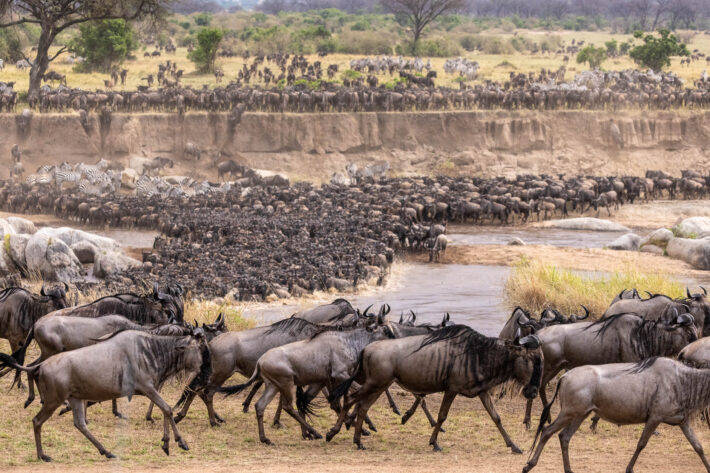
Africa is one of our favorite places to visit. The wildlife, both 4 footed and winged, the relative lack of crowds (at least compared to home) keeps drawing us back. Over the last dozen years we have rarely missed a year.
One of the iconic African events is the wildebeest migration, which is the largest herd movement of animals on the planet. On three previous trips we chased it with various luck – shut out once as “they were just over the hill and will be here shortly “ ( leaving out the part ‘shortly after we leave’), once we saw it one day after a 3 hour drive, and once we hit it big, seeing it on just about every day of a three weeks adventure. So we decided to try our luck again, and we got lucky again, hitting it big.
The Wildebeest is a strange animal, looking like it was designed by a committee. Think about it. They have the horns of a buffalo, the stripes of a zebra, the slope of a hyena, the tail of a horse, and the brain of a guinea fowl.-African myth.
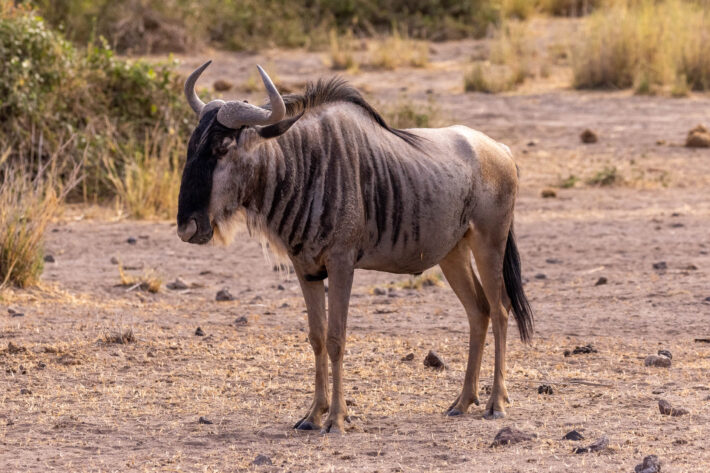
The result is so ugly that it is one of Africa’s Ugly 5 (Hyena, warthog, marabou stork and vulture are the others) with a face only a mother could love.
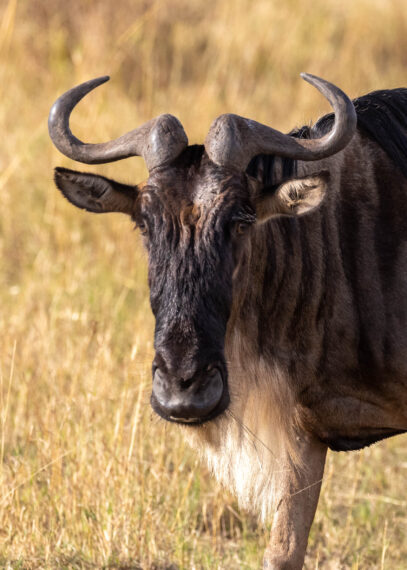
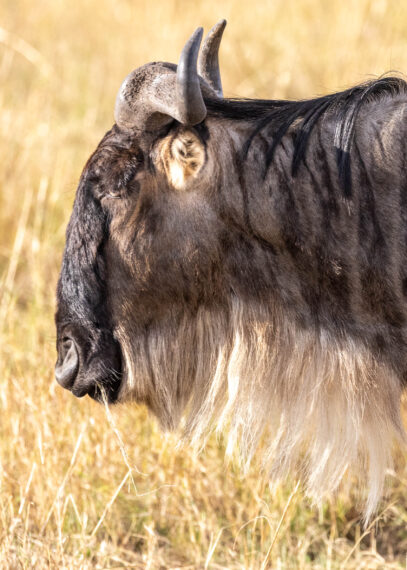
Yet despite its looks, its migration in Tanzania and Kenya is one of the natural wonders of the world. Anywhere from 1.2-1.5 million constantly cycle through the Serengeti-Mara ecosystem in search of nutritious grass and water. Guided by survival instinct, each wildebeest will cover 800 to 1,000 kms on its individual journey along age-old migration routes.
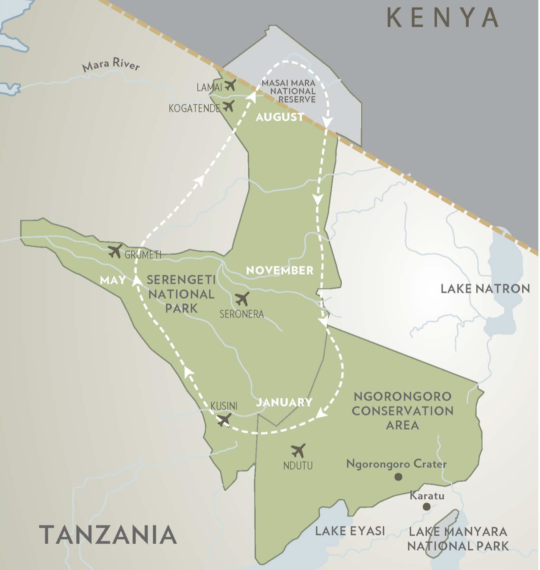
When you hit the migration they will stretch across the horizon as far as the eye can see (and at up to 1,000 animals per km², the great columns of wildebeest can be seen from space)
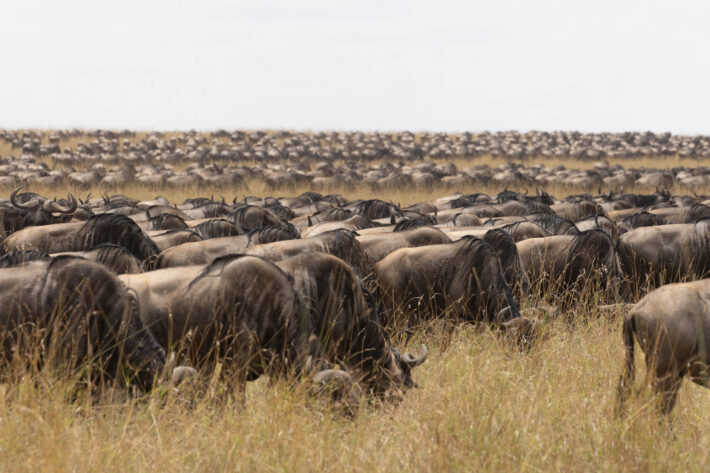
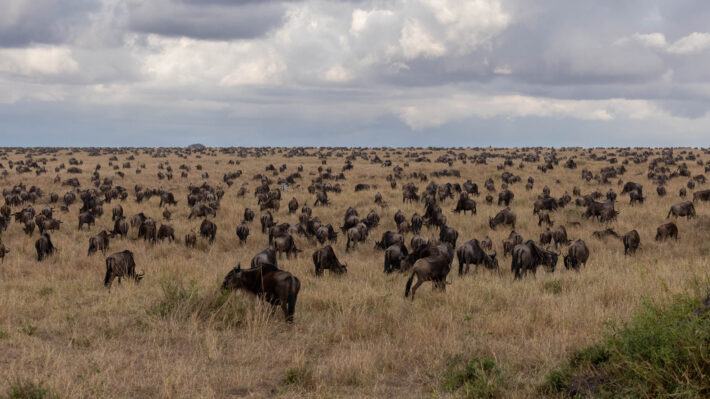
Impressive as that may be, the highlight of any migration viewing is their crossings of the Mara River in Northern Serengeti/Southern Masa Mara (the area around August in the above map). The river acts a natural barrier. In the August to October time frame when the herds are in the area it is only 1-3 feet deep, a depth the wildebeest can easily handle. However the crocodiles waiting for a meal and steep sides that must be negotiated on both sides of the river, give the wildebeest pause. They have known to come up upon the river, look at it for hours and even have some false starts before turning away and going elsewhere, much to the frustration of the 30-50 safari vehicles hoping to see the real thing.
The first sign of a possible migration is a massing, or gathering, of many, many wildebeest on the bank of the river.

And when they start to cross it is a massive sight as literally thousand, possibly tens of thousands wildebeest hit the water and cross the river.
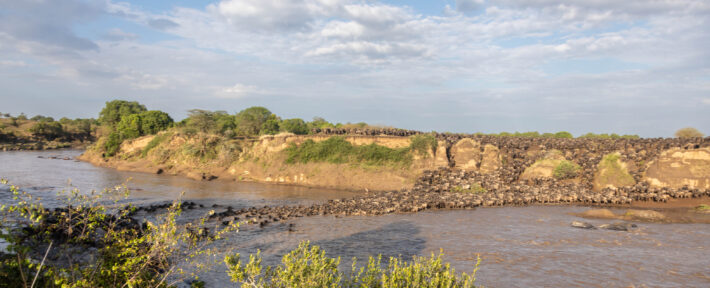
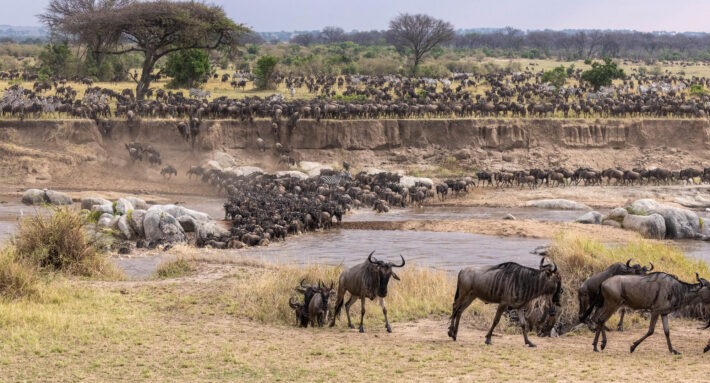
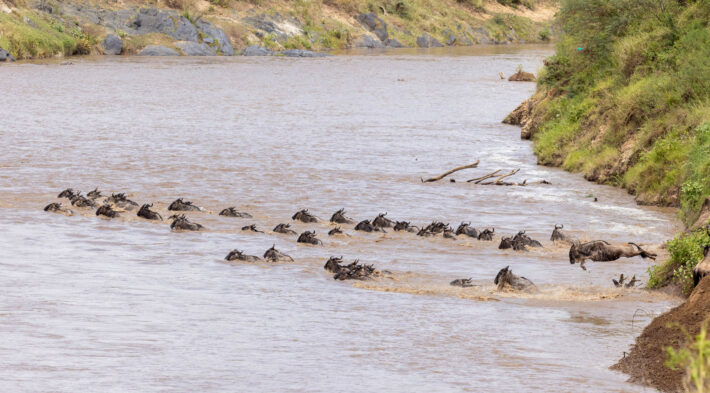
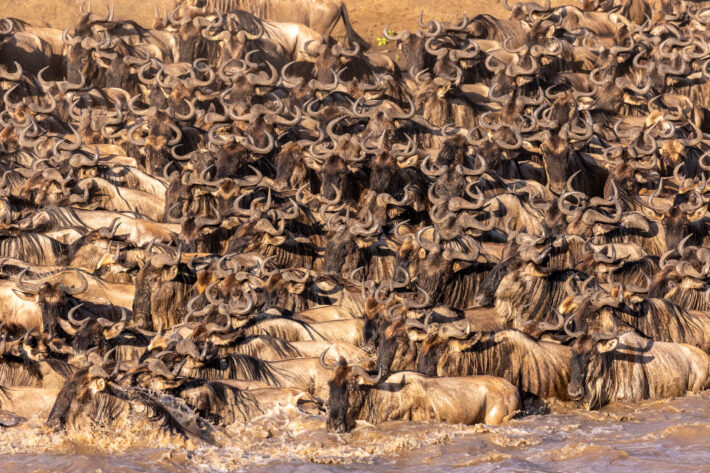
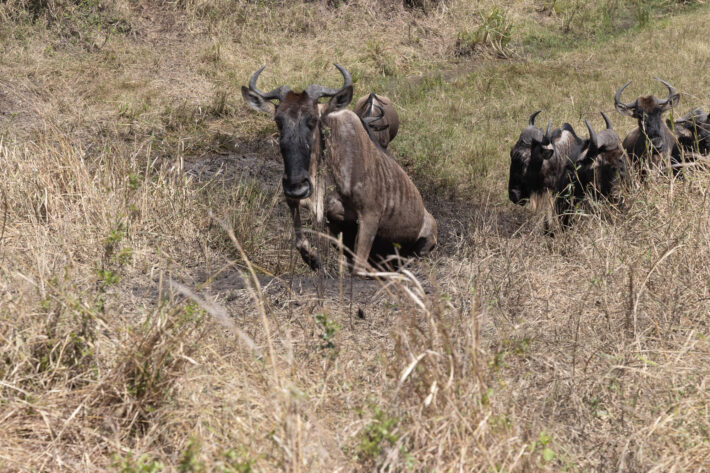
There is a reason they don’t jump like this all the time
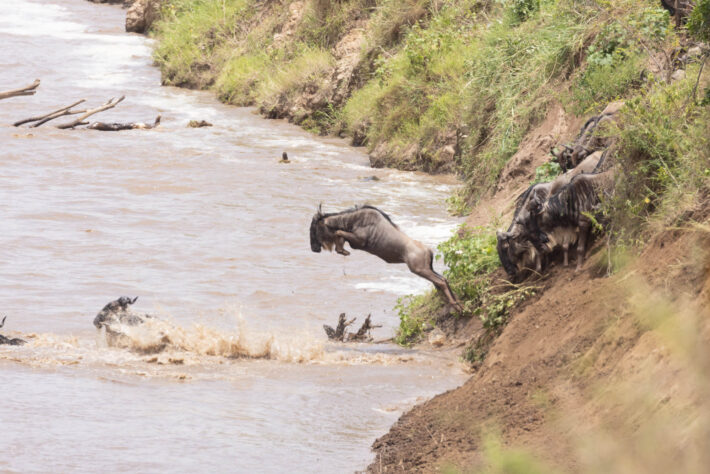
It is because the river has a few residents (crocodiles) who are hungry for a good meal
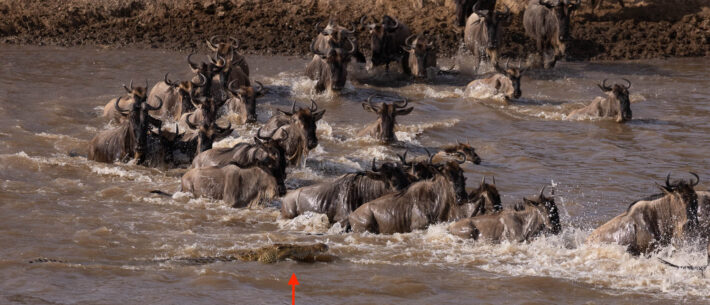
The crocodiles were remarkably unsuccessful in getting food, averaging less than one kill per crossing
Of course one of the downsides to a fantastic photo opportunity is that often you aren’t the only one there

And this was one of the smaller crowds, it was not unusual for 50 vehicles to be at a crossing, though usually spread out enough so you could get your shot once you had successfully battled them for your position.
Here’s a video
Being in Africa for 35 days, we had a lot of great experiences, and have broken our trip report into 4 sections:
Migration – Migration
Cats and More Cats. – Cats and More Cats
Horns and Tusks – Tusks & Horns
Potpourri of Wildlife. – Potpourri of Wildlife